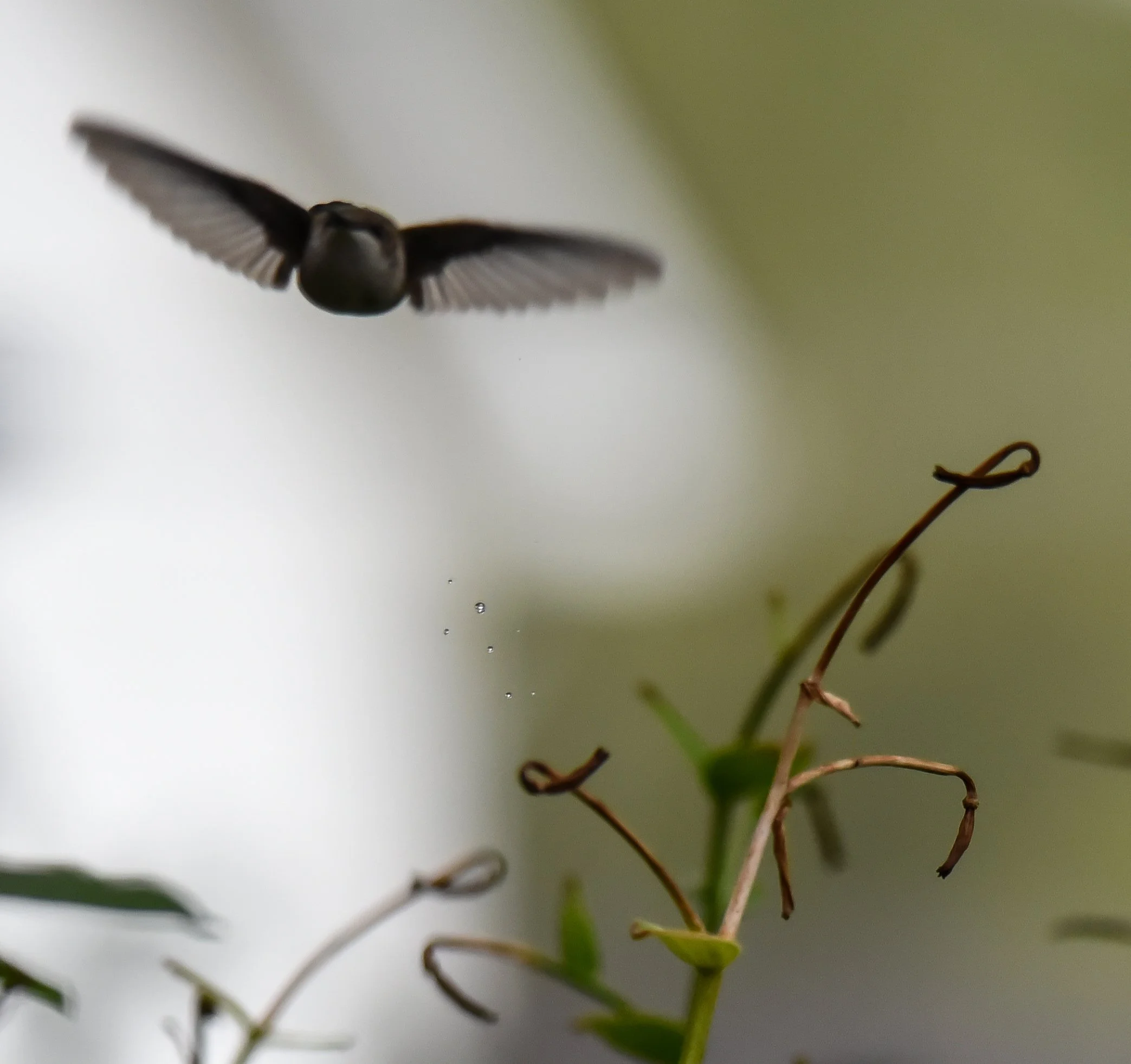Looking Back To See Ahead
When I look back on the birds
I held and beheld in 2023,
three of them come to mind as I write this year-end reflection:
a ruby-throated hummingbird who refused to leave,
a European starling who couldn’t stay,
and a speckled limpkin who was out of place,
and right on time.
I.
She stayed longer than the others.
Ruby-throated hummingbirds (Archilochus colubris) are solitary birds,
but they usually head South about the same time -
males by the end of August, females in September.
But this one lingered and I was grateful.
In a year punctuated by trauma and packed full of loss,
she made my heart smile.
Somewhere along the journey of evolution,
hummingbirds lost the ability to walk.
It is, after all, a rather pedestrian form of mobility
for a bird that can fly with such precision,
so its doubtful they harbor any regrets.
But they are left with very short legs.
And short legs fall short
when trying to scratch the itch behind the ear.
The migration of the ruby-throat is impressive by any measure.
Weighing less than a single sheet of paper,
they fly non-stop across the Gulf of Mexico,
which is a thousand miles away from Iowa,
where she perched and posed for a fraction of a second,
in the middle of October.
They usually go before they go,
lightening the load, so to speak, because every ounce matters.
As she headed out of focus in the photograph below,
she left behind a parting gift,
a liquid token of our time together,
spent nectar.
Thank you? I said to the empty perch.
See you next year.
II.
Heat in Iowa can be brutal.
A sidewalk in summer will sear your feet,
so the baby bird I found gasping for air
on the ground near my studio in mid-July didn’t stand of a chance.
Its nest-mates had already succumbed to the heat,
their broken bodies strewn about.
Shielding the struggling starling from the sun,
I listened for the sound that panicked parents make in times like these.
Silence.
This would not be a rescue story.
Soothing the suffering was all I had to offer,
so I took the over-heated bird inside and searched for an eye-dropper.
One of the first things to notice while holding any bird
is the heat coming from the bottoms of their feet.
The body temperature of a bird is about ten degrees higher than humans,
so the palm of my hand must have felt cool to the feet of this slowly fading starling.
After a few drops of water, I told the bird its origin story,
how European starlings (Sturnus vulgaris) came to America
thanks to Shakespeare enthusiasts of Central Park in the 19th century,
that a handful of birds now number over 200million - a megalomurmuration.
Before I got to the end, the part about the Anthropocene and climate catastrophe,
the bird’s steady breathing had stopped.
III.
While hiking in mid-September,
not far from my home, I came upon a bird I did not recognize.
Chestnut brown and speckled,
it was large like a heron, but not skittish or wary.
Instead, it was completely at ease, unperturbed by my presence
and close proximity,
placid, even.
It was a limpkin (Aramus guarauna), I later learned,
an unusual bird with an eerie, mournful call - like that of a hippogriff,
or the ambient caterwaul of a Tarzan movie.
Limpkins are common in Argentina and Bolivia. They thrive in Central America,
Caribbean, and occasionally Florida and Georgia.
I wondered if it had been blown off course by a hurricane,
or sent to Iowa by a petulant presidential candidate,
but the experts think that something else going on here to explain the appearance
of a speckled limpkin in Iowa.
This bird was not lost, this was reconnaissance - Limpkins are on the march.
These birds are expanding their range across the interior of the continent,
thanks in part to an overabundance of Chinese mystery snails
(Cipangopaludina chinensis).
2023, it seems, was just the beginning.
An onslaught of beauty is underway.
The speckled limpkin irruption has begun.
IV.
When I look ahead,
I can see
that 2024 will be heavy to lift and difficult to hold
as the cost of scorching sidewalks soar
and cataclysms become even more commonplace.
But this upheaval has unleashed more
than the contents of Pandora’s box.
Death, brokenness, and despair are not the only things
roaming around in large numbers.
Beauty is also on the prowl;
perching near the cracks in everything,
strewn across the path ahead,
unperturbed,
and completely at ease.
It lures me to look for delight in unlikely places,
to look after the suffering in the world,
and to be on the lookout,
because beauty is coming.
In fact,
look around and see,
it’s already here.
TLH
2023




